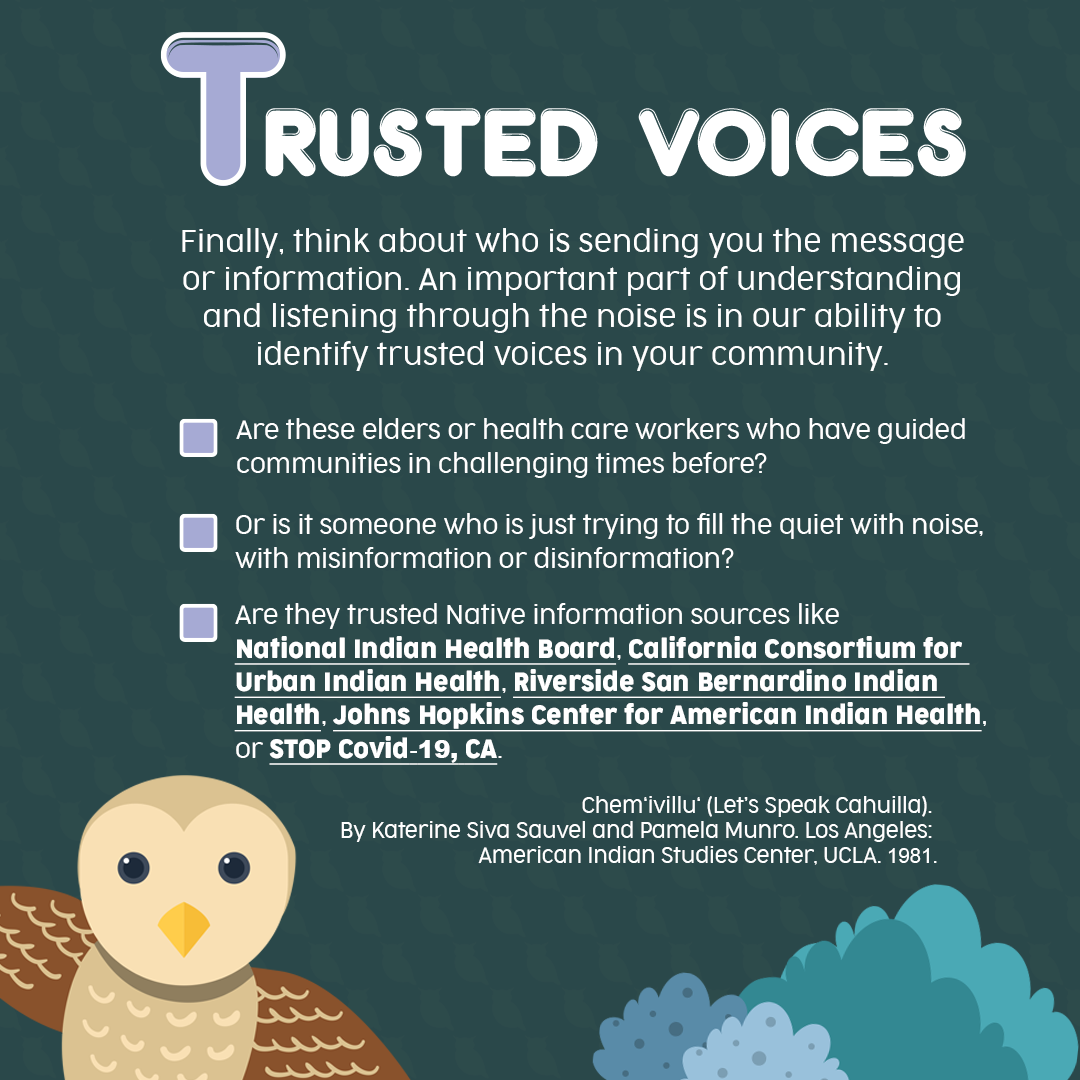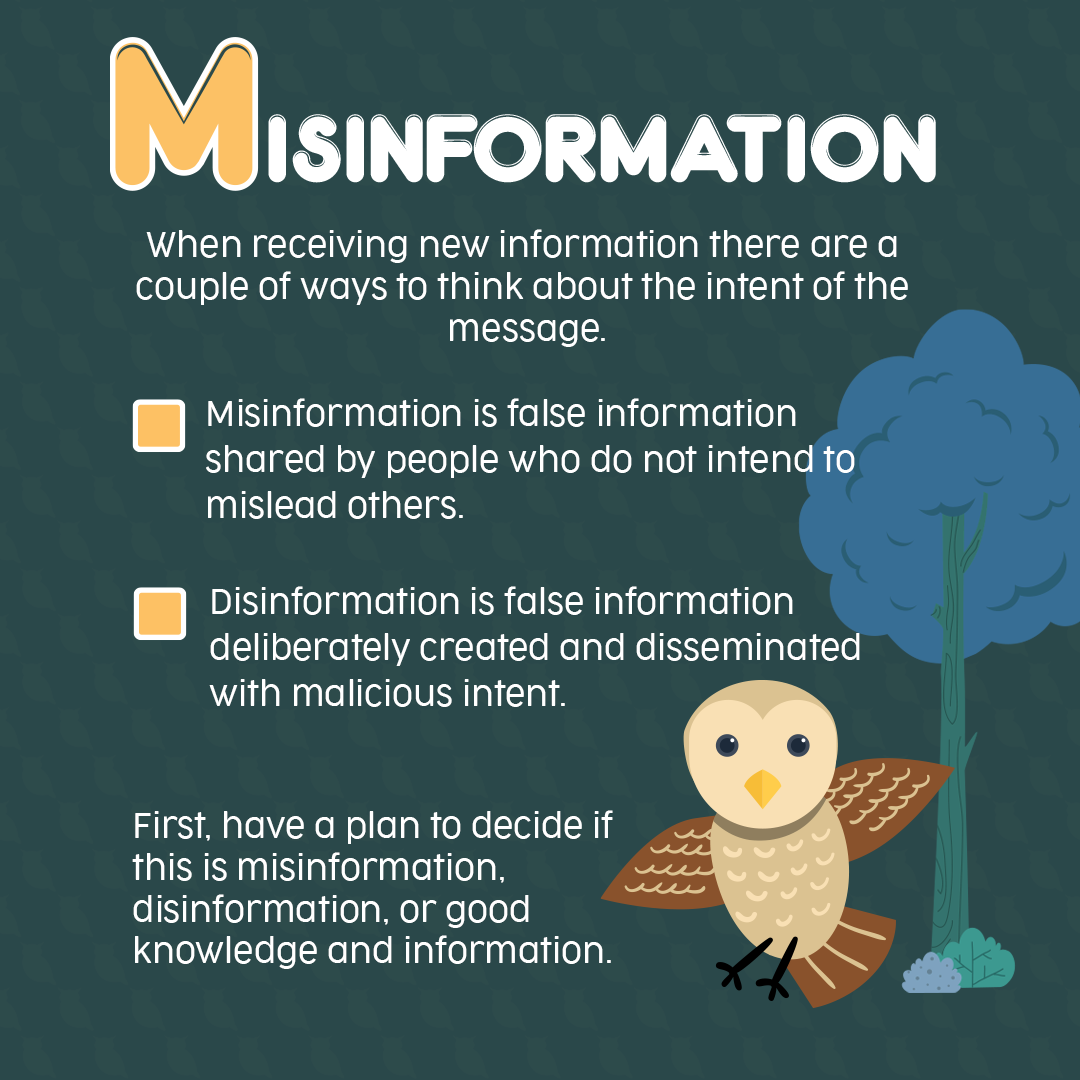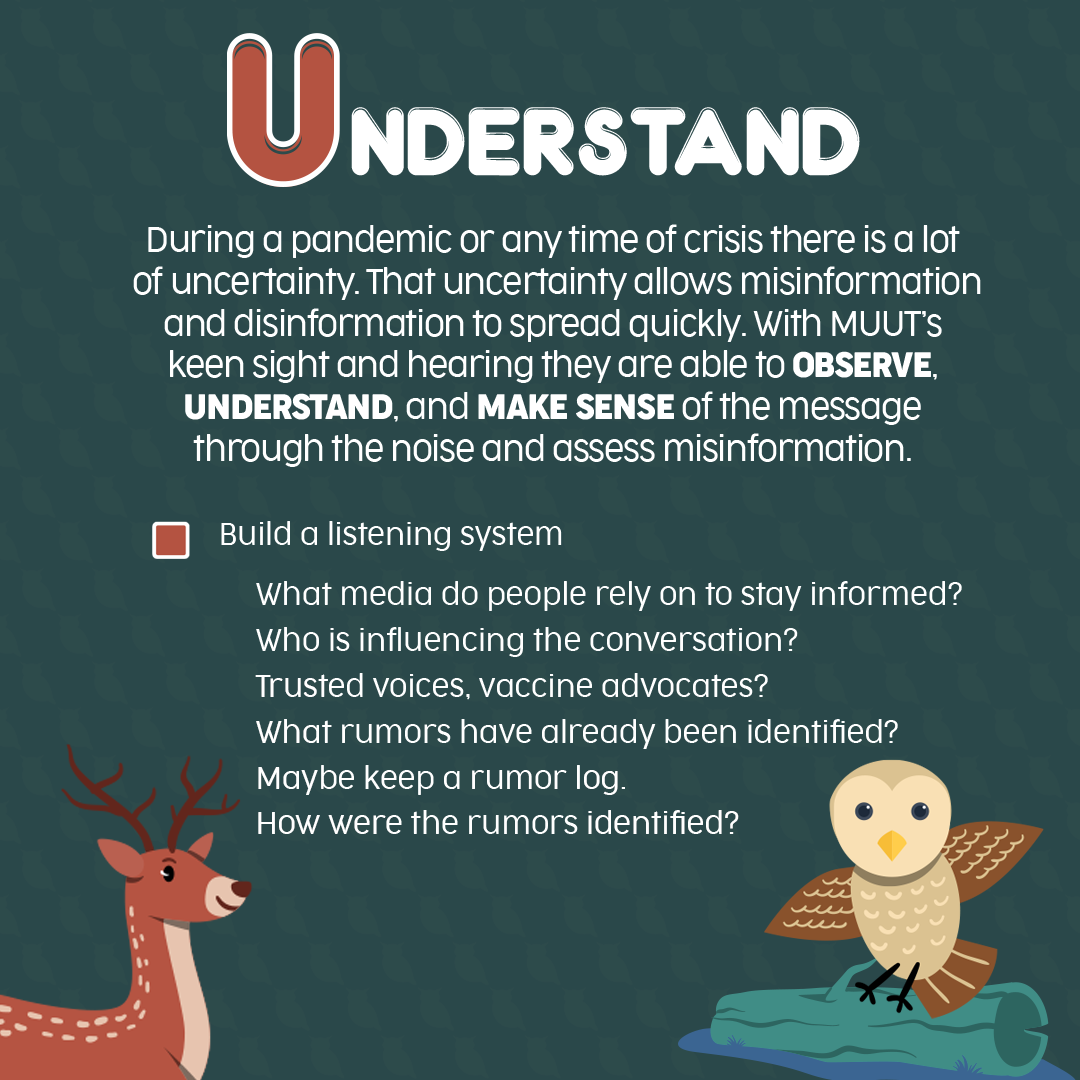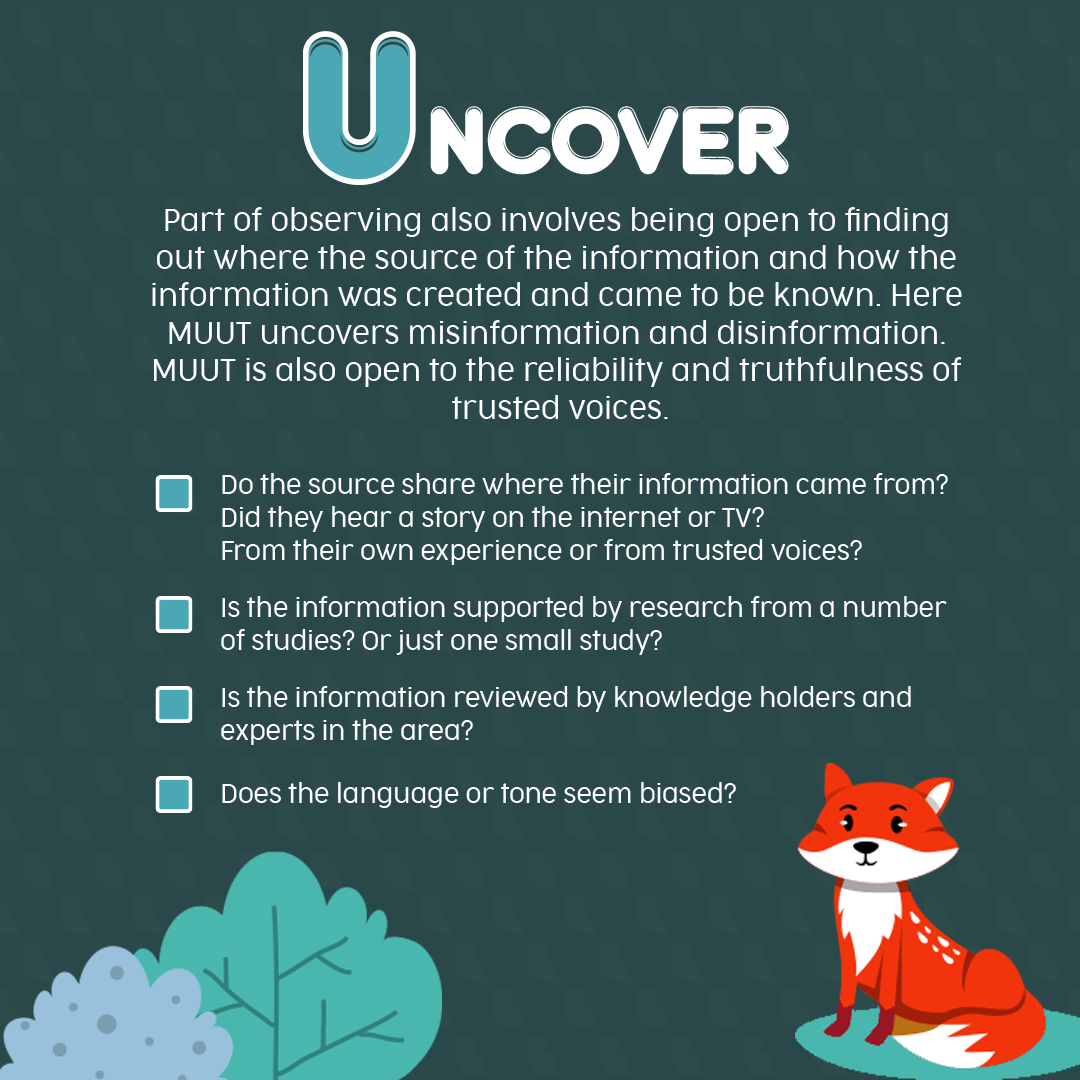Reading Messages for Digital Literacy During COVID-19 and Beyond: A guide for wellbeing
We live in an age where information can travel vast distances in an instant. Some information is based in knowledge, experience, and is helpful. Then, there is other information that is not helpful nor based in what is known, yet it wants you to think that it is good information.
MUUT*, the Cahuilla name for owl, is a wise and far-seeing animal who bears knowledge and serves as a messenger. Muut brings us messages that are based in knowledge, experience and tradition. Their messages are an invitation for us to reflect on what we receive. Remembering the spelling of MUUT can guide us in deciding whether the information is honest and knowing or if it comes from a place of misunderstanding.
*MUUT - Owl
* MUHTAM - Owls
* MOOT - Phonetic spelling of MUUT
MUUT — AN ACRONYM FOR DIGITAL LITERACY
Misinformation.
Understand.
Uncover.
Trusted voices.
Misinformation
When receiving new information there are a couple of ways to think about the intent of the message.
Misinformation is false information shared by people who do not intend to mislead others.
Disinformation is false information deliberately created and disseminated with malicious intent.
First, have a plan to decide if this is misinformation, disinformation, or good knowledge and information.
Understand
During a pandemic or any time of crisis, there is a lot of uncertainty. That uncertainty allows misinformation and disinformation to spread quickly. With MUUT's keen sight and hearing, they are able to OBSERVE, UNDERSTAND and MAKE SENSE of the message through the noise and assess misinformation.
TIP: Build a listening system:
What media do people rely on to stay informed?
Who is influencing the conversation? Trusted voices, vaccine advocates?
What rumors have already been identified?
Recommendation: Maybe keep a rumor log
How were the rumors identified?
Uncover
Part of observing also involves being open to finding out where the source of the information is and how the information was created and came to be known. Here MUUT uncovers misinformation and disinformation. MUUT is also open to the reliability and truthfulness of trusted voices.
TIP: Ask yourself these questions when viewing information:
Do the sources share where their information came from? Did they hear a story on the internet or TV? From their own experience or from trusted voices?
Is the information supported by research from a number of studies? Or just one small study?
Is the information reviewed by knowledge holders and experts in the area?
Does the language or tone seem biased?
Trusted Voices
Finally, think about who is sending you the message or information. An important part of understanding and listening through the noise is in our ability to identify trusted voices in your community.
TIP: Consider the following:
Are these elders or health care workers who have guided communities in challenging times before?
Or is it someone who is just trying to fill the quiet with noise, with misinformation or disinformation?
Are they trusted Native information sources? Examples:
MUUT Graphics, Materials, etc.
Cards/Mini Flyers:
Digital Literacy Guide Credits
Graphic Design: Sadie Redwing
Language Accuracy and Revision: Sherri Salgado
Scripting and Drafting: Juliet McMullin
Research and Initial Development: Preeti Juturu
This COVID-19 Toolkit is supported by the STOP COVID-19 CA project, which is funded by the National Institutes of Health (NIH) Community Engagement Alliance (CEAL). This project is a part of the University of California, Riverside School of Medicine Center for Health Disparities Research in partnership with Riverside-San Bernardino County Indian Health, Inc. (RSBCIHI).






















